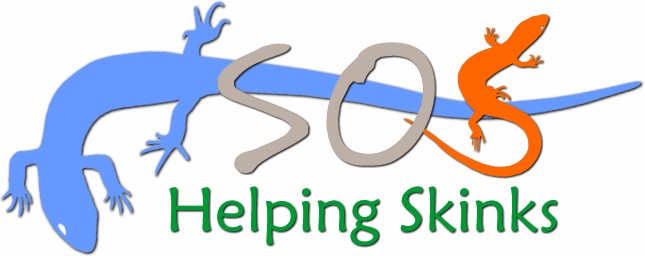|
|||||||||||||
Helping Skinks Conservation Issues for Skinks What can you do on your land to maintain or improve it as skink habitat? Maintaining skink habitat means maintaining good quality mixed-grass prairie. As mentioned in the Conservation section, native prairie is disappearing for a number of reasons. Let's take a quick look at each one and think about some options. If you have ideas on how to help, please pass them along. Send us some ideas at: Contact NatureNorth.com about SOS! Loss of prairie to development. This is a tough issue for skink conservation. How do you convince landowners to leave land in native prairie when they could make more money converting the land to crop fields, or commercial or residential developments? Do we as a society have the right to suggest or insist that some lands be maintained as skink habitat? Can we find ways to help landowners make money off their land so that it pays to keep it as good skink habitat? For people who no longer want to use their land for business, how can they ensure their land stays as native prairie without being a tax burden? What kinds of programs and opportuinties are around to help landowners keep habitat for skinks? Grazing and overgrazing. Grazing by the original herbivores on the plains, bison, elk and others is what helped to create the prairies in the first place. No grazing leads to forests. Modern grazers, cattle primarily, can graze native prairies and continue the process of prairie maintenance, as long as grazing regimes are ecologically sound. Stocking rates, timing of grazing, rotational grazing, these are all things to be considered. Too many cattle, too early in the year and for too long are not good for the prairies, or for skinks. But can we find levels and techniques of grazing that allow ranchers to make a living and have healthy prairies and skinks, too? Weed control. Leafy spurge and other non-native weeds can degrade native prairies if their densities get out of control. What options are out there to help control or eradicate these weeds? Do the control measures harm or help skinks? Brush (Aspen) control. Unchecked growth of aspens will ultimately eliminate native prairies from Manitoba. That's a scary statement, but it's true. There are probably no native prairies of any sort that do not have aspens growing on or near them. Aspen encroachment is inevitable unless active measures are put in place. What sorts of brush control work best? Could it be possible to push back the aspens and reclaim prior skink habitat or recreate new habitat? Burn, prairie, burn. Fire was a major contributor to keeping prairies as prairies. Fire promotes healthy growth of grasses and wildflowers and helps remove woody vegetation, like aspens. Fire is an important tool to help preserve native prairies, but it is a potentially dangerous tool, as we all know. How do we balance the need for burning with public safety issues. Is burning to preserve prairies OK when burning stubble off crop fields is frowned upon? Do fires have a direct impact on local skinks? What's the best timing of fires to ensure maximum benefits to skinks? Haying is an option. Harvesting native prairies as hay is a valid management practice to help maintain native prairies. Haying provides much of the management benefits of fire, without having to deal with the issues surrounding burning. Timed appropriately, occasional haying (probably not every year) helps to keep aspens and other woody vegetation out of prairies. Plus, it could provide some economic benefit to landowners. Hell, no, you don't have to mow! Do you really need to spend your weekends mowing grass? On your farm or in your residential yard, why not consider a native prairie landscape? Reducing lawn "maintenance" could make more habitat for skinks. Use native species in landscaping. Adopt xeriscaping techniques. And who knows what effects all those herbicides and pesticides from your yard and garden are having on skinks? Why not go chemical-free in your yard? More on Helping Skinks coming soon (maybe, if the government ever gets around to it!). |
|||||||||||||
|
|
||||||||||||
| |
|||||||||||||
